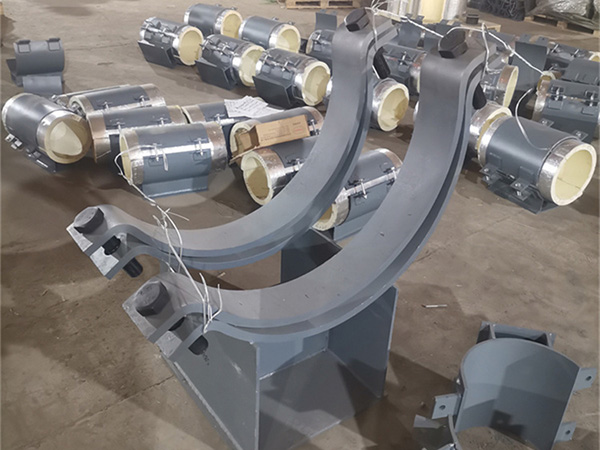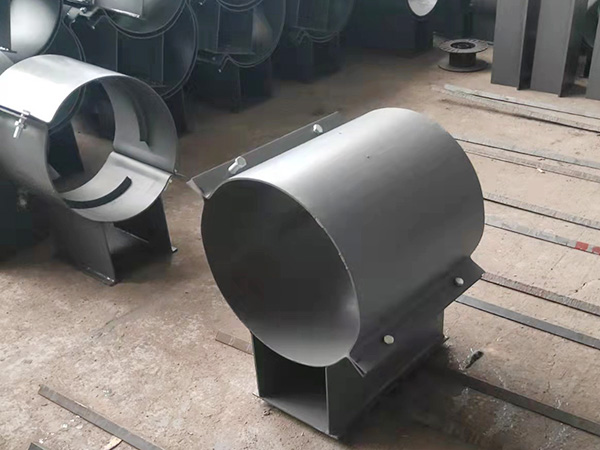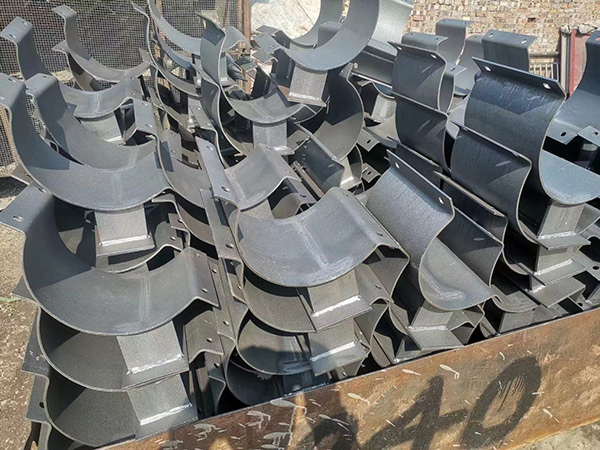Pipe Insulation Bracket Solutions for Harsh and Complex Working Conditions
Author:Mingde Time:2025-08-27 12:36:19 Click:84
In high-risk industrial operations, every component of Pipe Support Systems plays a role in safety, efficiency, and asset longevity. Among these, the Pipe Insulation Bracket is a deceptively small yet crucial element. It not only holds pipelines in place but also prevents thermal loss, mitigates corrosion, and reduces the risk of insulation damage—especially in extreme climates or aggressive work environments.


Why Pipe Insulation Brackets Are Essential in Modern Pipe Support Systems
Modern Pipe Support Systems are engineered to cope with more than just mechanical loads. They must handle constant temperature shifts, dynamic vibrations, and environmental stress. A well-designed Pipe Insulation Bracket serves multiple purposes:
·Secures the pipe alignment under operational strain.
·Preserves the integrity of surrounding insulation.
·Interrupts direct heat transfer between pipe and support points.
·Acts as a barrier to moisture penetration, slowing corrosion.
Environmental and Mechanical Challenges in Demanding Settings
Certain industrial zones pose unique hazards to pipeline infrastructure:
·Extreme heat or sub-zero cold, which can degrade materials or cause thermal contraction/expansion.
·High humidity and salt spray, particularly in marine or coastal sites.
·Mechanical vibration and shock loads from pumps, compressors, or seismic activity.
·Chemical vapors and splashes that attack metals and polymers alike.
Brackets in such contexts must be specifically designed to endure a mix of thermal, chemical, and physical stress.
Critical Characteristics of Durable Pipe Insulation Brackets
Minimizing Thermal Bridging
Thermal bridges can rapidly drain energy and create condensation issues. Brackets with insulating spacers or inserts cut off the direct conductive path, preserving temperature stability inside the pipeline.
Enhancing Corrosion Resistance
Materials with protective coatings, stainless alloys, or non-metallic composites help prevent rust and pitting—even when continuously exposed to moisture, salt, or reactive chemicals.
Ensuring Structural Load Stability
High-strength bracket designs distribute loads evenly and incorporate slip-resistant contact surfaces, ensuring that pipelines remain secure under static and dynamic forces.
Choosing the Right Materials for Pipe Insulation Brackets
Material choice is a balance of thermal, mechanical, and environmental performance:
·Phenolic foam: Exceptional fire rating and thermal insulation.
·High-density polyurethane (PU): Resistant to deformation and chemical attack.
·FRP (fiberglass-reinforced plastic): Lightweight, non-corrosive, and non-conductive.
·Stainless steel hardware: Ideal for marine or humid atmospheres.


Industrial Sectors that Rely on High-Performance Brackets
Offshore Energy Facilities
Saltwater exposure and strong winds require brackets that combine anti-corrosive metalwork with water-repellent insulation.
Chemical and Process Industries
Facilities handling acids, alkalis, or solvents need chemically inert bracket components to avoid rapid degradation.
Low-Temperature and Cryogenic Pipelines
Systems transporting LNG or other cryogenic media demand insulation that remains flexible and crack-free even at extreme cold.
Best Practices for Installation in Severe Conditions
·Inspect all brackets for coating defects before deployment.
·Apply sealants at joint interfaces to block moisture ingress.
·Use torque-controlled tools to prevent insulation crushing.
·Schedule thermal scans to detect early thermal bridging.
Emerging Trends in Pipe Support Systems
Next-generation Pipe Insulation Brackets are moving toward integrated monitoring, with sensors measuring load, temperature, and vibration in real time. Composite materials are also evolving to offer higher strength-to-weight ratios and enhanced fire performance.
Summary
For pipelines in challenging operational zones, Pipe Insulation Brackets are indispensable for ensuring mechanical stability, reducing thermal loss, and resisting environmental damage. Proper material selection, tailored design, and meticulous installation not only extend the service life of Pipe Support Systems but also safeguard productivity and safety. In harsh and complex working conditions, robust brackets are not a luxury—they are a frontline defense for long-term system performance.
References
GB/T 7714:Cao Q, Pojtanabuntoeng T, Esmaily M, et al. A review of corrosion under insulation: a critical issue in the oil and gas industry[J]. Metals, 2022, 12(4): 561.
MLA:Cao, Qing, et al. "A review of corrosion under insulation: a critical issue in the oil and gas industry." Metals 12.4 (2022): 561.
APA:Cao, Q., Pojtanabuntoeng, T., Esmaily, M., Thomas, S., Brameld, M., Amer, A., & Birbilis, N. (2022). A review of corrosion under insulation: a critical issue in the oil and gas industry. Metals, 12(4), 561.
 Hot Products
Hot Products
 Contact Us
Contact Us
Contact:
Mobile:+86 +86 19133378808
Website:mingdepipe.com
Address:









